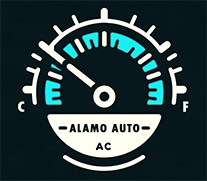The timing belt in your vehicle synchronizes the camshaft and crankshaft movements to keep your vehicle open and closing valves at the proper time. Hence the name, “timing belt”. Before the timing belt there was the timing chain; although both are still used, popularity for both ebb and flow. The main difference between the timing chain and the timing belt involves the material, price and placement. Because timing belts are made of rubber they are less expensive and less durable than their metal counterpart. Most of the makes using timing belts can be found here, but because of the placement it would be hard to know by only looking under your hood.
Because of the placement and material of a timing belt it is hard to know if it is going out. Here are some possible indicators:
- The engine won’t start (When this happens the timing belt is usually broken completely.)
- Ticking/ Clicking noises
- Engine misfiring
- Squealing from under the hood
- Overheating
Timing Belts can end up being a costly repair, depending on placement and vehicle components. It is best to try to prevent the timing belt from breaking.
To prevent a timing belt from going out there are a few tips to prevent the belt from getting cracks:
Repair any oil leaks IMMEDIATELY
Repair any water/ coolant leaks IMMEDIATELY
Try to drive frequently (This will help with the constant heat expansion)
No matter what preventative measures you take, be sure to check with your car’s specific maintenance requirements and change the belt whenever it comes due. This is important because a broken timing belt can cause all kinds of engine damage if left untreated. It is better to stay on top of this, rather than fix it as needed.
Below see our technician Gill replace the timing belt in a 2009 Hyundai



